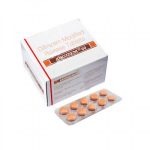Heat Cramps
Heat cramps are intermittent, involuntary muscle spasms that occur in physically active individuals in hot or humid weather. They are often associated with dehydration. Heat cramps usually affect the major stressed muscles such as the thigh and leg (quadriceps, hamstrings, and gastrocnemius), core muscles (abdominal wall and back), and arm muscles (biceps, triceps).
Heat cramps can also occur after activity has ended. For example, construction workers or roofers can develop cramps a few hours later.
Causes of Heat Cramps
The cause of muscle cramping in response to heat is not fully understood. Some research suggests that excess activity can lead to a loss of the muscle’s ability to regulate contraction, known as altered neuromuscular control. Regardless of the cause, the diagnosis and treatment for heat cramps remain the same.
Symptoms of Heat Cramps
Heat cramps are the earliest symptoms of heat-related illness. These include significant sweating and involuntary spasms of large muscles in the body. The muscles that cramp are usually those that have been stressed. For example, leg muscle cramps are common in runners and football players, while people who lift objects as part of their job may experience cramps in their arms or core trunk muscles like the abdominal muscles. Heat cramps typically occur after significant activity but can also develop hours later.
If other signs or symptoms such as lightheadedness, weakness, nausea, vomiting, and headache are present, it may indicate heat exhaustion. Heat stroke, which is a true medical emergency, can occur if an individual stops sweating, develops a fever, and becomes confused.
Risk Factors for Heat Cramps
While heat cramps mainly affect those who are active in a hot environment, they can also be a symptom of heat exhaustion. Individuals with impaired temperature control mechanisms are at higher risk of heat-related illness. Infants, young children, elderly individuals, people who live alone or lack air conditioning, and those taking certain medications or consuming alcohol are more susceptible to heat cramps.
When to Seek Medical Care for Heat Cramps
Heat cramps can usually be treated on the spot. The affected individual should stop all activity, find a cool place to rest, and gently stretch the cramped muscles. Replacing fluid loss by drinking water, sports drinks, or electrolyte replacement solutions can help. However, if the cramps cannot be controlled, medical care should be sought.
It can be challenging to differentiate between heat cramps and heat exhaustion, as the symptoms overlap. Severe heat cramps may indicate heat exhaustion, especially if accompanied by nausea, vomiting, fatigue, weakness, or continuous sweating in a cooler environment. Heat stroke is a medical emergency and should prompt the activation of emergency medical services.
Preventing Heat Cramps
Prevention is key in avoiding heat cramps and other heat-related illnesses. Those who have experienced heat cramps previously are more prone to future episodes. Acclimating to the hot environment over several days can help the body adapt to its water and electrolyte needs. It is also essential to avoid working or exercising in the heat of the day if possible, drink plenty of fluids (especially when significant sweating occurs), and rest in cool or shaded areas whenever possible.
Diagnosis and First Aid for Heat Cramps
The diagnosis of heat cramps is based on the patient’s history, such as the environment they were in, the activity performed, and the onset and location of cramps. Physical examination findings may include soreness in the cramped muscles, signs of dehydration, and abnormal vital signs. Treatment focuses on symptom relief and may involve intravenous fluids, anti-nausea medications, and over-the-counter anti-inflammatory medications.
Prognosis and Complications
Heat cramps generally resolve with rest, hydration, and stretching. While there are few long-term consequences, individuals who have had heat cramps are at risk of future episodes. Prompt treatment is crucial to prevent progression to heat exhaustion or heat stroke.
References:
– Kravchenko J, et al. Minimization of Heatwave Mortality and Morbidity. American Journal of Preventive Medicine. 2013; 44(3): 274-82.
– Schwellnus MP. Cause of Exercise Associated Muscle Cramps (EAMC) – altered neuromuscular control, dehydration or electrolyte depletion. British Journal of Sports Medicine. 2009; 43:401-408.


